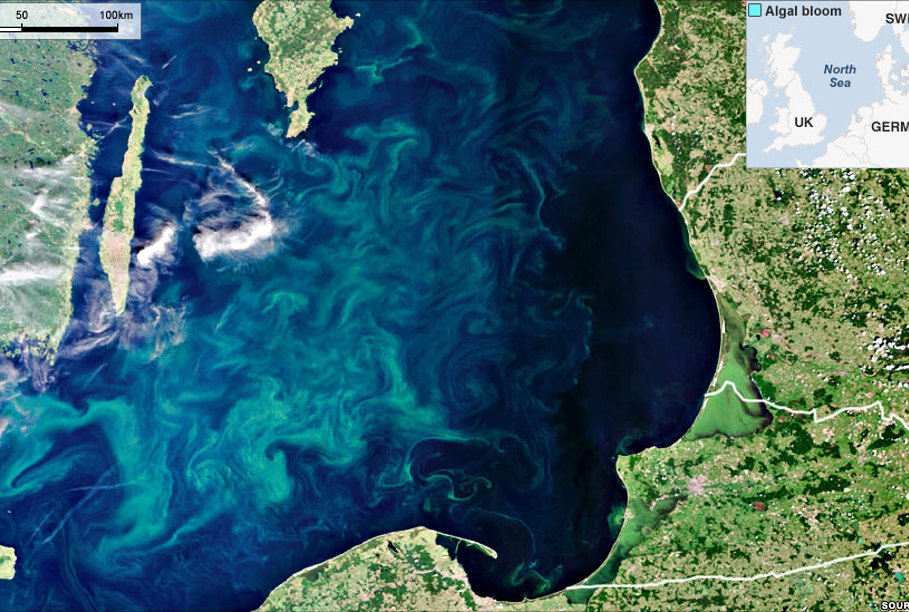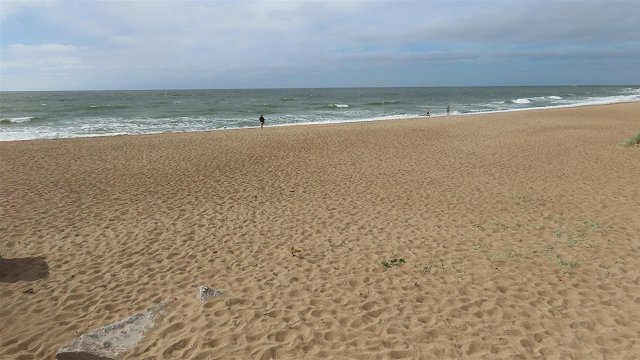Latvia’s beaches were deemed clear and safe for swimming. However, coastal communities need to be on the lookout for fast-creeping surface blooms of blue-green algae near their beaches this week.
Sweden’s meteorological authorities noted Saturday that the season’s first algae clusters of cyanobacterial blue-green algae (otherwise known as “pond scum”) have appeared in the Baltic Sea proper east of Gotland and “are expected to drift northwards and then change direction towards southeast” during the next 24 hours.
LSM’s weatherman Toms Bricis reminded listeners Saturday that, while the winds stay mild, these surface accumulations won’t necessarily be pushed all the way to Latvia’s seacoast, but that doesn’t mean we won’t see our own local surface blooms appearing in slow-moving, warmer waters.
Cyanobacteria can produce toxins that endanger marine life, animals and humans who come into contact with it. It also is known to bloom in inland fresh water bodies, where it has garnered the nickname “pond scum.” In Latvia pond scum is frequently found in lakes, ponds and river lagoons with little to no current.
Under no circumstances should one swim in, drink or boil, rinse, or otherwise expose oneself to waters with visible blue-green algae blooms, warn environmental health authorities. Toxic waters can have an unpleasant smell and soupy density, display a greenish surface covering, yellow-brownish water or small floating green and yellow dots.
In case of exposure, one should rinse immediately with fresh water and contact medics, if possible. Upon encountering a possible toxic bloom, one should notify the appropriate local government authority.
Pets are the most common victims of cyanobacterial poisoning, because the signs of toxicity are usually so visibly apparent to humans.






























